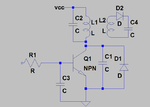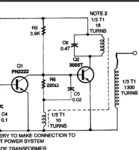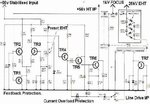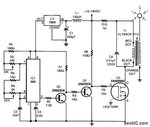horizonrays
Newbie level 3


my first question is that what does 1/3 t1 10 turns in the transformer do ?
what is the function of c5 0.02 capacitor , which is at base and connects with the coil ?
snubber capacitor c6 .47, what is the formula to calculate it ?
how to calculate the value of c1, c2, c3.
i have seen many circuits where capacitor is used with diode. why to have diode and capacitor together ? Either capacitor or diode is alone capable enough as snubber are they not ?
why to have snubber c2 in paralel to l1, when transistor already have snubber diode ?
what is the function of c3 which is in between base and ground ?



